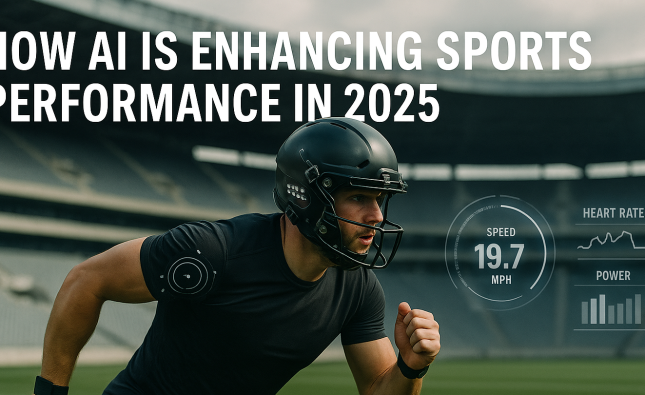
Technological developments are changing industries at a rate never seen before as 2024 approaches. In addition to completely changing how businesses operate, emerging technologies are also opening up new avenues for creativity and expansion. Businesses are using cutting-edge technologies, such as artificial intelligence and quantum computing, to boost productivity, improve consumer experiences, and gain a competitive edge. This article examines the top 5 cutting-edge technologies that will revolutionize sectors in 2024 and their effects on the business world.
1. Artificial Intelligence (AI) and Machine Learning (ML)

Overview
One of the most revolutionary technologies of the modern period is artificial intelligence (AI). Businesses may now automate procedures, make data-driven choices, and unlock new capabilities thanks to artificial intelligence (AI) and machine learning (ML). By 2024, AI will be applied in a variety of sectors, including manufacturing, healthcare, finance, and retail, to spur innovation and improve operations.
Benefits
- Enhanced Efficiency: AI-powered automation enables businesses to streamline operations, reducing human error and speeding up processes.
- Better Decision-Making: With machine learning models, companies can analyze vast datasets to gain valuable insights, leading to informed and accurate decision-making.
- Improved Customer Experience: AI is personalizing customer experiences by analyzing behavior and preferences, helping businesses create more tailored marketing strategies.
- Cost Savings: By automating routine tasks, AI reduces labor costs and improves overall operational efficiency.
Case Study: AI in Healthcare
In the healthcare sector, AI is transforming patient care by aiding in diagnostics, drug development, and personalized treatment plans. For example, companies like IBM Watson Health are using AI to analyze medical data, helping doctors diagnose diseases more accurately. AI-based diagnostic tools have also been implemented in radiology, where they assist in identifying abnormalities in medical images, leading to quicker and more accurate diagnoses.
Example: AI in Retail
Retailers are utilizing AI to enhance customer engagement and optimize inventory management. Amazon’s AI-driven recommendation engine is a prime example, offering customers personalized product suggestions based on their browsing and purchase history. This approach has significantly improved customer satisfaction and boosted sales.
2. 5G Connectivity
Overview
The rollout of 5G networks is one of the most anticipated technological developments in 2024. With faster speeds, lower latency, and higher data transfer rates, 5G is set to revolutionize industries such as telecommunications, entertainment, and logistics. This technology is paving the way for real-time communication, smart cities, and advanced IoT applications.
Benefits
- Faster Data Transfer: 5G offers speeds up to 100 times faster than 4G, enabling smoother streaming, faster downloads, and more efficient data processing.
- Reduced Latency: The ultra-low latency of 5G improves real-time communication, critical for applications like autonomous vehicles and remote surgery.
- Expanded IoT Capabilities: 5G is driving the growth of the Internet of Things (IoT) by connecting more devices and enabling real-time data exchange.
- Enhanced Remote Work: With 5G, remote work becomes more efficient, allowing for seamless video conferencing, cloud-based collaboration, and data sharing.
Case Study: 5G in Smart Cities
Cities like Singapore are at the forefront of adopting 5G technology to create smart city infrastructures. 5G is being used to connect IoT devices that manage traffic flow, reduce energy consumption, and enhance public safety. For example, sensors installed across the city monitor traffic congestion in real-time, automatically adjusting traffic lights to minimize delays.
Example: 5G in Manufacturing
In the manufacturing industry, 5G is enabling the use of smart factories where machines are interconnected through IoT devices. These factories can monitor production in real-time, allowing for predictive maintenance, reducing downtime, and increasing efficiency. Companies like Siemens are leading the way in integrating 5G into their manufacturing operations.
3. Quantum Computing

Overview
Quantum computing represents a major leap forward in computational power. Unlike classical computers, which process information in binary (0s and 1s), quantum computers use quantum bits (qubits) that can exist in multiple states simultaneously. This allows quantum computers to solve complex problems much faster than traditional computers, making them ideal for industries like finance, pharmaceuticals, and logistics.
Benefits
- Faster Problem-Solving: Quantum computers can process massive datasets in seconds, which would take classical computers days or even years to solve.
- Optimized Supply Chains: Quantum computing can analyze multiple variables at once, allowing companies to optimize their supply chains, reducing costs and improving delivery times.
- Drug Discovery: Quantum simulations can model molecular interactions more accurately, speeding up drug discovery and reducing the time it takes to bring new treatments to market.
- Risk Management: In the finance industry, quantum computing can help improve risk assessment models, making it easier for businesses to manage complex financial portfolios.
Case Study: Quantum Computing in Drug Development
Pharmaceutical companies like Pfizer and IBM are using quantum computing to accelerate drug development. By simulating molecular structures and interactions at the quantum level, researchers can identify promising compounds faster, reducing the time and cost of bringing new drugs to market.
Example: Quantum Computing in Finance
In the financial sector, companies like JPMorgan Chase are experimenting with quantum computing to improve their risk assessment and fraud detection models. By leveraging quantum algorithms, banks can analyze complex datasets in real-time, enabling more accurate predictions and better financial decisions.
4. Blockchain Technology
Overview
Blockchain technology, originally developed for cryptocurrencies like Bitcoin, is now being adopted across various industries for its ability to provide secure, transparent, and decentralized solutions. In 2024, blockchain is transforming sectors such as finance, supply chain management, and healthcare by enabling secure data transactions, improving traceability, and reducing fraud.
Benefits
- Enhanced Security: Blockchain’s decentralized and immutable nature ensures that data is tamper-proof, reducing the risk of fraud and cyberattacks.
- Transparency: Every transaction recorded on the blockchain is visible to all participants, increasing trust and transparency in business processes.
- Efficient Transactions: Blockchain allows for faster and more cost-effective transactions by eliminating the need for intermediaries such as banks or clearinghouses.
- Supply Chain Management: Blockchain improves traceability in supply chains, making it easier for companies to track the origin and movement of goods.
Case Study: Blockchain in Supply Chain Management
Companies like Walmart and IBM are using blockchain technology to enhance supply chain transparency. By tracking products on the blockchain, Walmart can ensure food safety by identifying the source of contamination within minutes. This has significantly improved their ability to respond to foodborne illnesses and recalls.
Example: Blockchain in Finance
In the finance industry, blockchain is being used for secure and efficient cross-border payments. Ripple, a blockchain-based payment platform, enables banks to transfer funds globally in seconds, reducing costs and processing times compared to traditional methods. This technology has the potential to revolutionize the way international payments are conducted.
5. Augmented Reality (AR) and Virtual Reality (VR)

Overview
Augmented reality (AR) and virtual reality (VR) are rapidly gaining traction in industries such as retail, entertainment, education, and healthcare. These immersive technologies offer new ways to engage customers, train employees, and visualize data. AR overlays digital information onto the real world, while VR creates a fully immersive digital environment, making them powerful tools for both consumers and businesses.
Benefits
- Enhanced Customer Engagement: AR and VR provide interactive and immersive experiences, allowing businesses to engage customers in new and exciting ways.
- Training and Simulation: VR is being used for employee training in industries like healthcare, aviation, and manufacturing, offering realistic simulations without real-world risks.
- Improved Product Visualization: In retail, AR allows customers to visualize products in their own space before making a purchase, reducing returns and increasing satisfaction.
- Remote Collaboration: VR enables remote teams to collaborate in a virtual environment, making it easier to work together on complex projects despite geographical distances.
Case Study: AR in Retail
IKEA has successfully implemented AR in its shopping experience through the IKEA Place app. The app allows customers to use their smartphones to visualize furniture in their homes before purchasing. By overlaying 3D models of furniture onto real-world environments, customers can see how items will fit and look in their space, improving their buying experience and reducing the need for returns.
Example: VR in Healthcare
VR is being used in healthcare for both training and treatment. Surgeons are using VR simulations to practice complex procedures before performing them on real patients. Additionally, VR is helping treat patients with anxiety disorders and PTSD through immersive therapy sessions. Companies like Osso VR are developing VR platforms specifically for surgical training, improving outcomes and reducing the risk of errors.
Conclusion
Around the world, industries are changing as a result of the 2024 introduction of these revolutionary technologies. Blockchain, 5G, quantum computing, AI, and AR/VR are fostering innovation, boosting productivity, and opening up new avenues for companies to expand and prosper. These technologies’ influence on various industries will only grow as they develop further, opening the door to a future that is more technologically sophisticated, connected, and efficient.
Businesses that use these cutting-edge technology will not only maintain their competitive edge but also open up new avenues for expansion and prosperity. Understanding how to successfully incorporate these tools into current processes and utilizing their full potential to revolutionize business operations are crucial.










